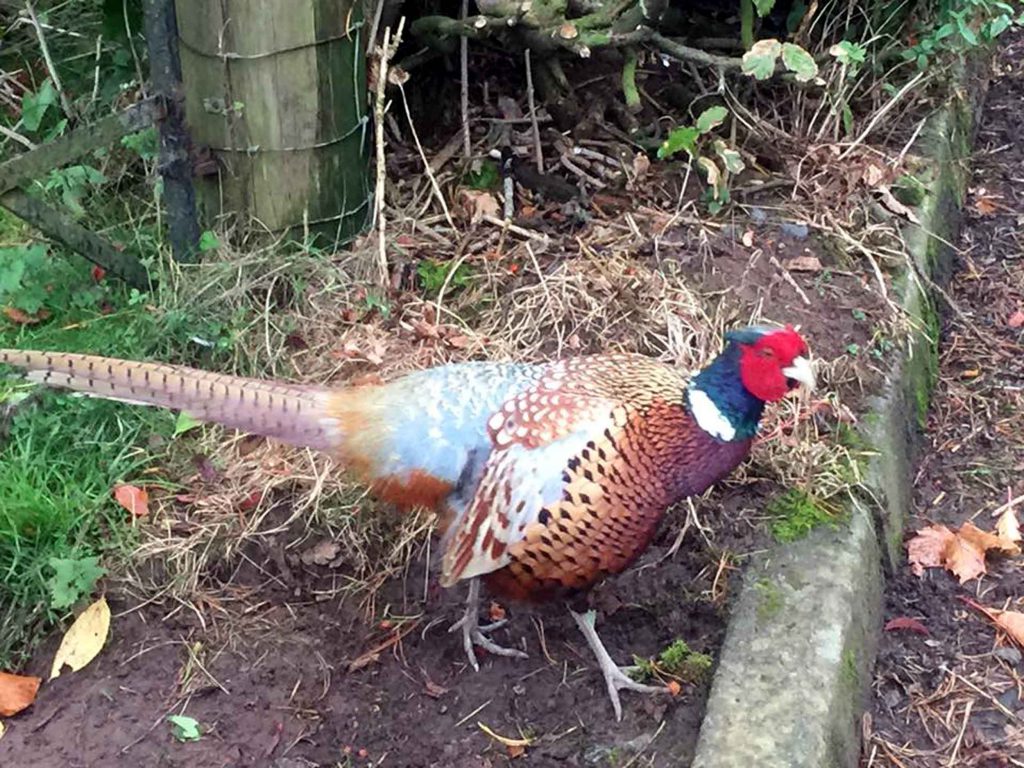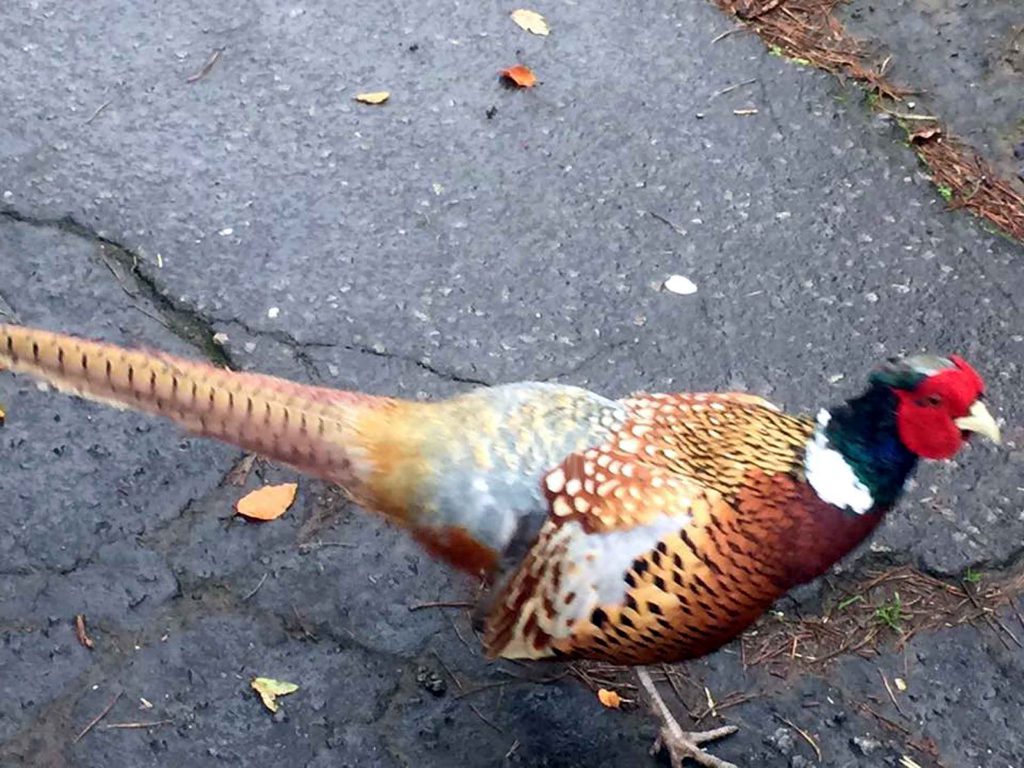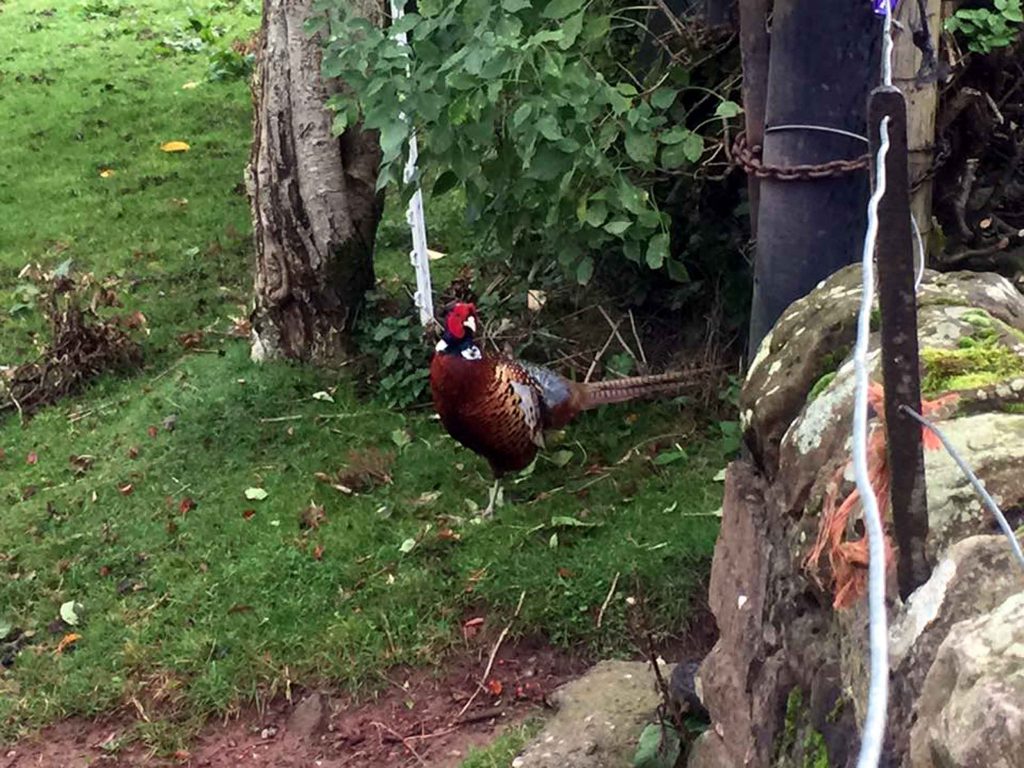A FEROCIOUS, “growling” pheasant has been attacking passers-by in a Scottish village.
The bolshie bird runs up to pedestrians in Balfron, Stirlingshire, and pecks away at their shoes. One walker said he had to be “saved” by a local builder armed with a piece of wood.
The fearless pheasant has been attacking people for months and has become such a feature in the area it has even been given a name – Archie.
Pheasants are normally shy creatures and, with the official shooting season starting next month, have more reason than ever to keep their heads down.
But a recent video shows Archie harrassing a visiting walker by pecking at his shoes and trousers while making a strange growling noise.
Andrew Campbell, of Bishopbriggs, East Dunbartonshire, described his encounter with Archie on the outskirts of the village next to a farm.
He said: “I had stopped at the entrance to the farm, as there was a horse in the field. That’s when I noticed the pheasant kind of lurking around the entrance to the farm, so I thought cool I can get a photo.”
” The pheasant then started to get closer which I thought was a bit strange, and it came right up to me. It was fine for a few seconds then it started pecking my feet and circling me, I turned to walk away and it followed me for a good 50 metres or so, again flying into me pecking my feet and legs, walking right in front of me.”

The persistent little bird continued the assault, until Mr Campbell enlisted the help of some local builders nearby.
He continued: “I couldn’t get it to stop. Luckily, a builder working on the lodge across the road came to my aid. He jumped out the van into the lodge grounds and grabbed a piece of wood.”
“The pheasant turned and headed back. The workman said he had been attacked himself and told me the thing was a bloody nightmare.
“Apparently, Archie has been attacking passers-by for months.”
Mr Campbell posted his experience on social media which prompted quite a few reactions.
Kevin Fordyce said: “Into the pot with him ….yum”
Evelyn Grant wrote: “Be grateful he doesn’t have a gun…………………. got to defend himself from the oven somehow!”
Séamus Jim MacAoidh commented: “Not called ring neck pheasants for no reason.
Wring neck, pluck and cook.”
Adam Wallace said: “My grandad helped a game keeper on an estate and an old cock pheasant would run along side the jeep and attack the tyres.”

Hugo Straker, the Senior Scottish Advisor at the Game & Wildlife Conservation Trust has said “it’s not unusual to find the occasional bold pheasant.”
He said: “It’s not unheard of, they’re not aggressive but you might find the occasional one that behaves a little bit like a goose. This usually is a very dominant bird and if you’ll excuse the pun, they can become quite cocky.”
“They mean absolutely no harm, they are just defending their territory, and very, very rarely you will see one actually approach a person.”
Mr Straker commented on the peculiar noise Archie was making as Mr Campbell walked past.
He continued:
“They don’t really make a growling sound, it is more of a deep guttural chatter that you can usually here between pheasants. The throaty noise is them having a chat or conversation with each other.”
“The cock can be very defensive during the incubation period when his hens are in their nests and if another cock were to come along he will aggressively defend them and the nests. They have been know to get so aggressive that they can actually kill each one another during the sparring match.”

Mr Straker gave his advice for coming across a bird like Archie:
“By the sound of it, this cock was definetly defending his patch and territory given the time of year, and almost certainly well used to humans.”
“My advice would be just say good afternoon and keep walking, they’re perfectly harmless and this little guy was just cocky with life.”
If Archie had any sense at all, he would be keeping out of sight altogether. The pheasant shooting season in Scotland began on October 1 and runs until Febuary 1.
Large numbers of pheasants are managed in natural woodland on sporting estates up and down the country and are sold to supermarkets and butchers.
The bird is native to Asia and the the very south-eastern corner of Europe. According to some, it was introduced to the British Isles by the Romans as a source of food.
